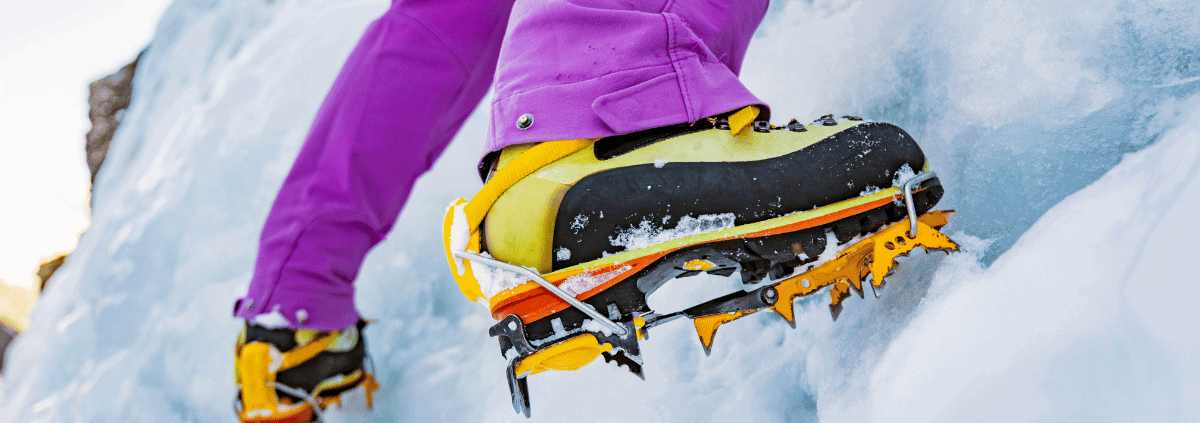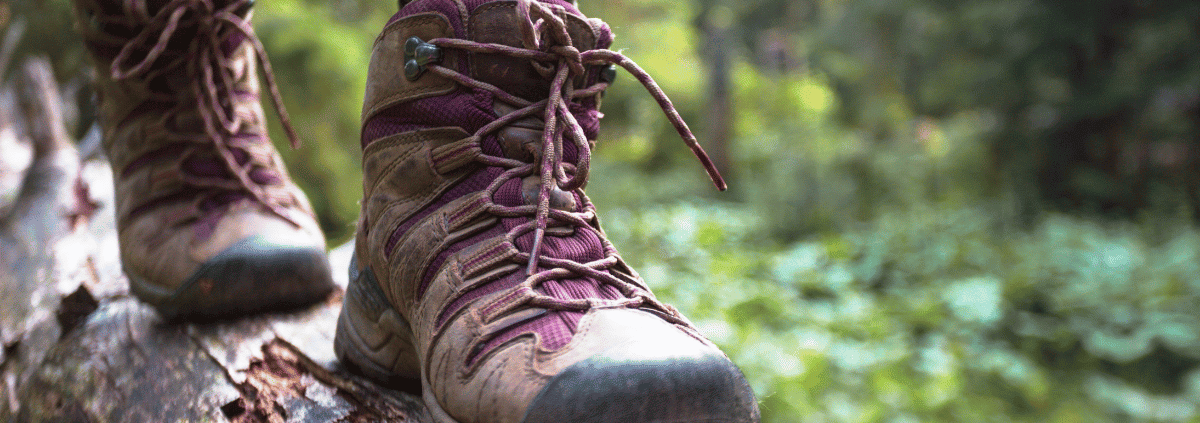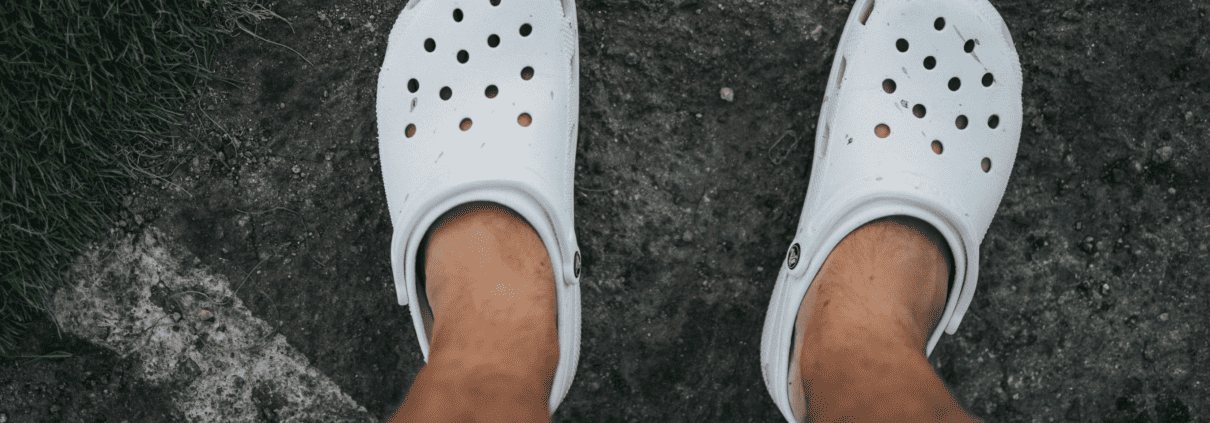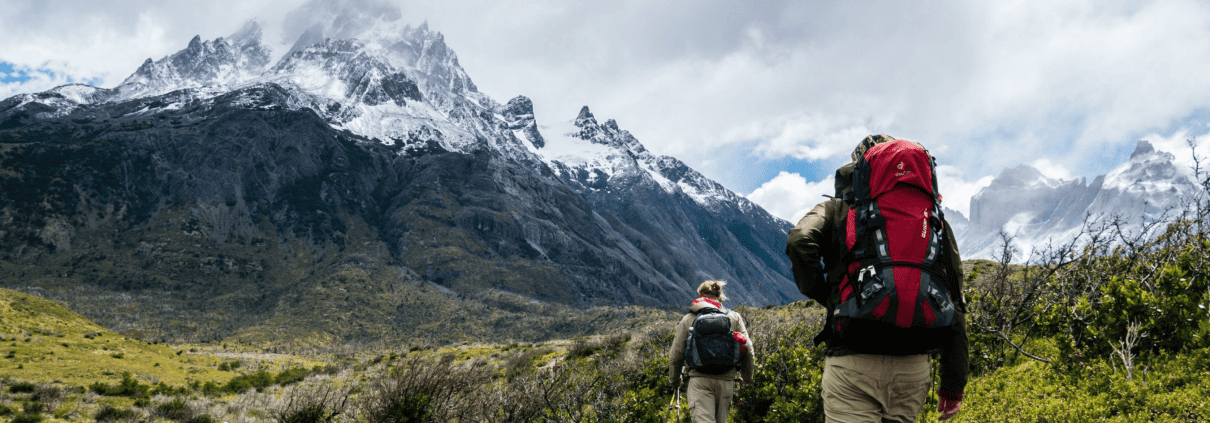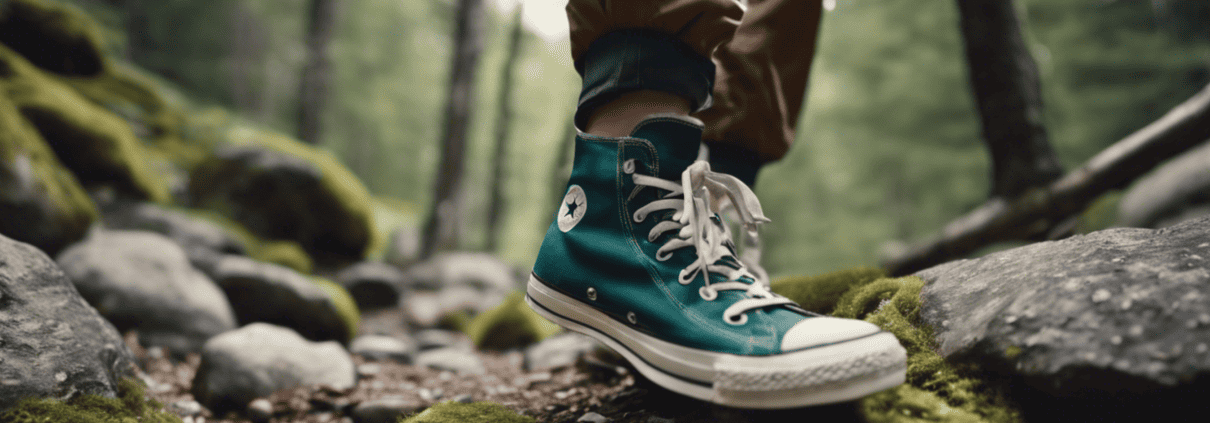Ready to conquer winter trails? Understanding when to choose crampons or microspikes can elevate your hiking game.
This year, crampons and microspikes are essential for 87% of hikers navigating snowy and icy terrain. Uncover their unique features and limitations to make informed decisions.
By the end, you’ll confidently select the right traction for your next snowy adventure. Lace up and get ready to explore which device suits your winter escapade.
Key Takeaways
- Crampons are suitable for steep and icy terrain, while microspikes are better for flatter, snow-covered trails.
- Crampons provide a solid attachment to boots and excellent traction on ice, while microspikes are lightweight and easy to put on and take off.
- Crampons are more durable and long-lasting, but can be bulky and expensive compared to microspikes.
- Crampons require specific boots for proper attachment, while most microspikes are compatible with any boot.
Purpose of Crampons and Microspikes
When hiking on icy or slippery terrain, crampons and microspikes are essential for enhancing traction and preventing potential falls. Crampons are sturdy, with large spikes designed for steep and icy terrain. They provide a solid attachment to your boots and offer excellent traction on ice. However, they’re less comfortable for general hiking and not suitable for flat trails.
On the other hand, microspikes are lightweight and easy to put on, perfect for flat and packed snow terrains, but they’re less durable and may not be suitable for steep and challenging terrains. Understanding the differences in functionality and comparing traction on different terrains will help you choose the right gear for your hiking adventure, ensuring you have the stability and security you need.
Features of Crampons
To understand the features of crampons, consider their construction and design, providing essential traction for steep and icy terrains.
- Construction and Design
- Crampons have a strong frame made of steel or aluminum.
- They feature large spikes on the bottom for digging into ice.
- Some crampons require fitting and can only be used with specific boots.
Crampons fitting is crucial for their effectiveness on challenging terrains. The fitting ensures a secure attachment to your boots, providing stability and safety during climbs.
Additionally, the durable construction of crampons enhances their longevity, making them ideal for intense and frequent use, especially in harsh winter conditions.
Pros and Cons of Crampons
You frequently rely on crampons for added traction on steep and icy terrains while hiking. Crampons provide a solid attachment to your boots, offering excellent traction on ice and ensuring safety. They’re durable and long-lasting, suitable for mountaineering and ice climbing.
However, they can be bulky, adding weight to your gear, and may require specific boots for proper attachment. Additionally, crampons tend to be more expensive compared to other traction devices and may be less comfortable for general hiking compared to microspikes.
When considering crampons, it’s essential to weigh their benefits in traction and durability against the potential drawbacks of added weight and specific boot requirements.
Types of Crampons
Distinguishing between different types of crampons involves considering material, bindings, spikes, and compatibility with your boots.
Material
Steel or aluminum frames offer durability and strength.
Aluminum is lighter, suitable for less technical terrain.
Bindings
Step-in bindings are compatible with mountaineering boots.
Strap-on bindings are versatile and fit various boot types.
Spikes
Horizontal front points for general mountaineering.
Vertical front points for ice climbing and steep terrain.
When choosing the right crampons for your boots, consider the terrain and activity. Opt for aluminum crampons for less technical terrain and strap-on bindings for versatility. Additionally, select crampons with horizontal front points for general mountaineering and vertical front points for ice climbing and steep terrain.
Features of Microspikes
When selecting microspikes, consider the flexibility and convenience they offer for various hiking terrains. Microspikes are designed for packed snow and ice on simple hiking trails. They’re lightweight, easy to put on and take off, and can be folded and stored in a small bag for convenience.
While they may not be suitable for steep and challenging terrains, they provide good traction on icy surfaces and are perfect for flat and packed snow terrains. Keep in mind that they’re less durable compared to crampons and may not be as effective on deep snow or thick ice.
Some top microspike brands include Kahtoola Microspikes and Yaktrax Diamond Grip. When comparing microspikes vs. crampons, consider the specific usage scenarios and the terrain you’ll encounter on your hiking adventures.
Pros and Cons of Microspikes
Considering the advantages and drawbacks of microspikes will help you determine their suitability for your hiking needs.
Pros
Lightweight and minimal impact on gear weight
Easy to put on and take off without special skills
Convenient to carry and store in a small bag
Cons
Less durable compared to crampons
May break under heavy use or extreme conditions
Limited effectiveness on deep snow or thick ice
Microspikes aren’t as durable as crampons and may not hold up well under heavy use or extreme conditions. Additionally, they’re less effective on deep snow or thick ice. However, their lightweight nature and ease of use make them convenient for less challenging terrains.
When considering microspikes, it’s essential to weigh their advantages against their limitations to ensure they align with your hiking requirements.
Types of Microspikes
To delve into the types of microspikes, you should understand the variations in design and features that cater to different hiking needs and terrains. When choosing the right microspikes, it’s essential to compare them to crampons and consider the specific terrain you’ll encounter. Here’s a comparison of microspikes to crampons:
| Microspikes | Crampons |
|---|---|
| Lightweight and flexible | Bulky and heavy |
| Suitable for flat and packed snow trails | Ideal for steep and icy terrain |
| Easy to put on and take off | Require fitting and specific boots |
| Limited effectiveness on deep snow or thick ice | Provide excellent traction on ice |
Understanding these differences will help you make an informed decision when selecting the right traction device for your hiking adventure.
Terrain Considerations
As you consider the terrain for your hiking adventure, it’s essential to understand the differences in terrain suitability for crampons and microspikes.
Steep and Icy Terrain
Crampons are suitable for steep and icy terrain, providing a solid attachment to boots and excellent traction on ice.
Microspikes aren’t suitable for steep and challenging terrains and may provide limited effectiveness on steep, icy climbs.Flat and Packed Snow Trails
Microspikes are ideal for flat and packed snow terrains, offering good traction and stability.
Crampons shouldn’t be used on flat trails and are best suited for steep, icy climbs.Terrain Compatibility
Consider the specific terrain you’ll encounter to make an informed decision about choosing the right traction device.
Traction and Stability
For hiking in snowy and icy conditions, assessing the traction and stability of crampons and microspikes is crucial. When comparing the grip, traction, and stability of crampons and microspikes, it’s essential to consider the effectiveness on different terrains. To help you make an informed decision, here’s a comparison table to showcase the differences between the two traction devices:
| Aspect | Crampons | Microspikes |
|---|---|---|
| Grip | Excellent traction on ice and steep terrain | Good traction on packed snow and ice |
| Stability | Solid attachment to boots | Less secure attachment compared to crampons |
This table highlights the superior grip and stability of crampons on icy and steep terrains, while microspikes provide good traction on packed snow and ice, but with a less secure attachment. Choose wisely based on the specific terrain you’ll be encountering.
Recommendations and Additional Information
When choosing between crampons and microspikes, it’s important to consider recommendations and additional information to make an informed decision for your hiking needs.
- Top Crampon Recommendations:
- Kahtoola K-10 crampons
- Grivel G-12 crampons
Consider these top crampon recommendations, including the Kahtoola K-10 and Grivel G-12 models, for reliable traction on icy terrain.
- Snowshoes as an Alternative Traction Device:
- Ideal for deep snow, not ice.
Additionally, if you anticipate encountering deep snow, snowshoes can serve as an alternative traction device.
- FAQs:
- Additional information and answers to common questions.
Lastly, be sure to check out the FAQs section for additional information and answers to common questions.
Frequently Asked Questions
Can Crampons or Microspikes Be Used for Running on Icy Terrain?
When running on ice, prioritize safety. Ensure proper footwear and consider traction devices like microspikes for trail running in icy conditions. Crampons are better suited for mountaineering and winter sports. Always take necessary precautions.
Are There Any Specific Maintenance or Care Tips for Prolonging the Lifespan of Crampons and Microspikes?
To maintain crampons and microspikes, clean them after use to remove dirt and moisture, preventing rust. Store them in a cool, dry place, away from direct sunlight. These simple care steps help prolong their lifespan.
Can Crampons or Microspikes Be Used for Activities Other Than Hiking, Such as Ice Fishing or Snowshoeing?
For ice fishing, snowshoeing, and winter trail running, microspikes are suitable due to their lightweight and ease of use. Crampons are better for mountaineering and ice climbing, providing stronger traction on steep, icy terrain.
How Do Crampons and Microspikes Compare in Terms of Noise Level While Walking on Different Surfaces?
When hiking, microspikes produce less noise than crampons. This reduced traction can be advantageous in quiet outdoor settings. Footwear technology has evolved to prioritize noise reduction, enhancing your outdoor experience.
Are There Any Specific Guidelines for Using Crampons or Microspikes in Combination With Other Hiking Gear, Such as Gaiters or Trekking Poles?
When using crampons or microspikes, consider gaiters for added protection and trekking poles for balance. Ensure they fit securely over your footwear. Layer clothing appropriately. Crampons are best for steep ice, while microspikes suit packed snow.
Conclusion
Now that you’re armed with the knowledge of crampons and microspikes, you can confidently navigate snowy and icy trails like a seasoned mountaineer.
Just like choosing the right tool for the job, selecting the right traction device is like finding the perfect dance partner for the winter terrain.
So, whether you’re waltzing through fluffy snow or tangoing across icy patches, you’ll be ready to glide through your next snowy escapade with ease.

